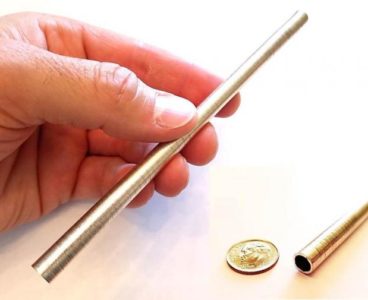Particles in solution can grow, transport, collide, interact, and aggregate into complex shapes and structures. Predicting the outcome of these events is very challenging, especially for irregularly shaped particles in extreme solution conditions. New research from scientists at the Interfacial Dynamics in Radioactive Environments and Materials (IDREAM) Energy Frontier Research Center has found that aluminum…
Most Info Ever Captured from Single Cell
Scientists have obtained a slew of key information about proteins, the molecular workhorses of all cells, from single human cells for the first time. The stockpile of information about proteins — the most such data ever collected from a single mammalian cell — gives scientists one of their clearest looks yet at the molecular happenings…
Coral-Shaped Nanoparticles Built Using Engineered Peptoids
Researchers have long worked to address a grand challenge in synthesis science: to design and synthesize bio-inspired functional materials that rival those found in biology. If we can learn how to mimic in vivo functions of natural proteins — such as how biomolecules (e.g., proteins) and inorganic salts interact to form teeth, bones, or shell…
Diseases Detected Early Thanks to Enhanced Protein Analysis
People could start receiving life-saving treatment for cancer and other diseases much earlier with the help of a new method to analyze blood proteins. A paper by researchers at Pacific Northwest National Laboratory describes a new way to prepare and analyze blood samples that significantly improves researchers’ ability to detect proteins that exist in very…
ShAPEing the Future of Magnesium Car Parts
Magnesium — the lightest of all structural metals — has a lot going for it in the quest to make ever lighter cars and trucks that go farther on a tank of fuel or battery charge. Magnesium is 75 percent lighter than steel, 33 percent lighter than aluminum and is the fourth most common element…
Night Vision for Bird & Bat-Friendly Offshore Wind Power
The same technology that enables soldiers to see in the dark can also help protect birds and bats near offshore wind turbines. Night vision goggles use thermal imaging, which captures infrared light that’s invisible to the human eye. Now, researchers at the Department of Energy’s Pacific Northwest National Laboratory are using thermal imaging to help birds and…
Tackling Infectious Diseases One Protein at a Time
Bubble-Blowing Batteries Hold Promise for Electric Cars
With about three times the energy capacity by weight of today’s lithium-ion batteries, lithium-air batteries could one day enable electric cars to drive farther on a single charge. But the technology has several holdups, including losing energy as it stores and releases its charge. If researchers could better understand the basic reactions that occur as…
Sunlight Activates Electrical Current Flow in New Material
Mined to make the first compass needles, the mineral magnetite is also made by migratory birds and other animals to allow them to sense north and south and thus navigate in cloudy or dark atmospheric conditions or under water. A team of scientists has compositionally modified magnetite to capture visible sunlight and convert this light…



